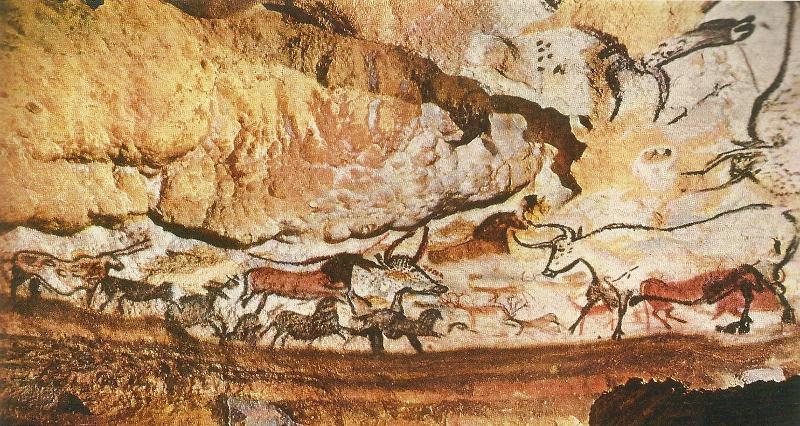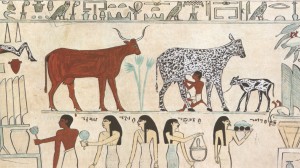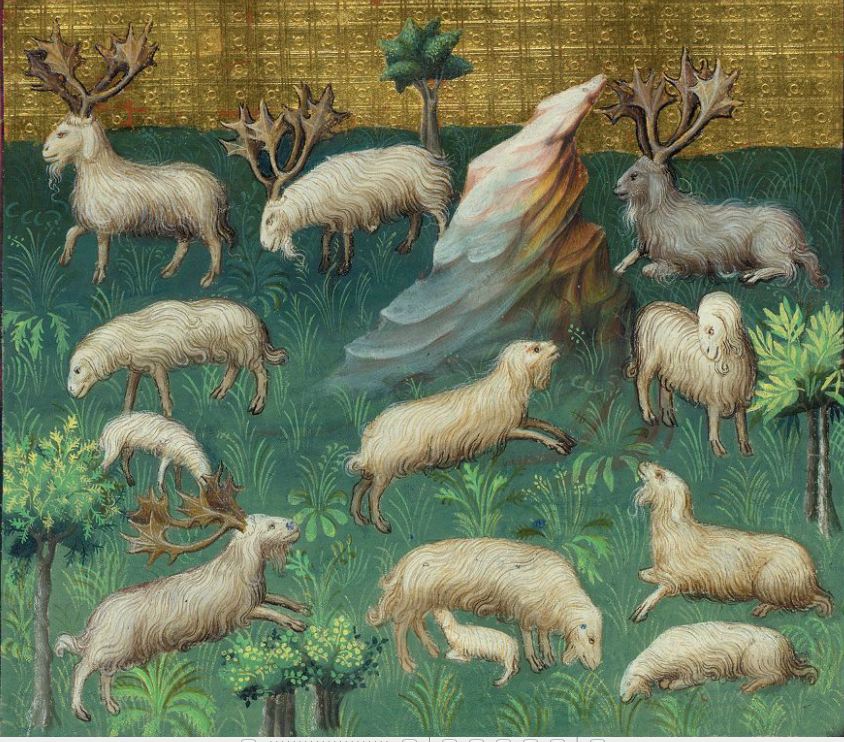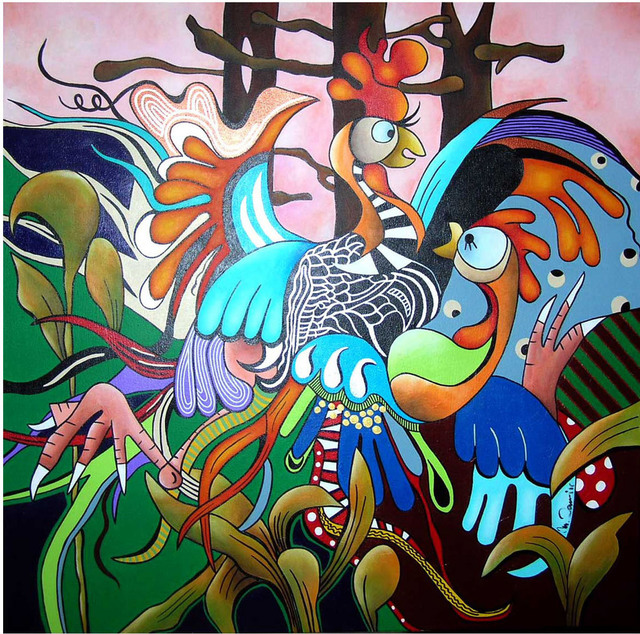Please click HERE to view the Timeline.
I choose to show the progress of animals painting in different eras:
Prehistoric and Ancient Art, Medieval Art, Renaissance Art and Baroque Art, Modern Abstract Art, and Digital 3D Graphics. The painting styles embrace a variety of techniques, including painting with fingers, sticks, and pads of fur or moss; daubing; dotting; sketching with coloured materials and charcoal; and spray painting through hollow bone or by mouth. Several pigments were used, and foreshortening and shadowing were skilfully employed. Images were often crowded close to and on top of each other, sometimes with obvious respect for previously applied paintings. Irregular surfaces were decorated in relief. Separate styles belonged to different eras.

Cave Paintings- Lascaux Caves.
In this Image On September 12, 1940, the entrance to Lascaux Cave was discovered by 18-year-old Marcel Ravidat. Ravidat returned to the scene with three friends, Jacques Marsal, Georges Angel, and Simon Coencas, and entered the cave via a long shaft. The teenagers discovered that the cave walls were covered with depictions of animals. Lascaux (Lascaux Caves) is the setting of a complex of caves in southwestern France famous for its Paleolithic cave paintings. The original caves are located near the village of Montignac, in the department of Dordogne. They contain some of the best-known Upper Paleolithic art. These paintings are estimated to be 17,300 years old.

Egyptian Art- Hunting Species.
During the most recent ice age, from about 20,000 years ago, large mammals such as bison roam on the sub-arctic tundra of Europe and Asia. They are preyed upon by two groups of hunters, both much smaller and weaker than themselves – but both with a sufficiently developed social system to enable them to hunt and kill in packs. According to Cartwright L. and Marita Sturken in Practices of Looking; “Out of these kinds of symbolism and multiple spatial logics, both of which remained dominant in art in varying ways through the medieval period, perspective emerged as a set of techniques for bringing depth to two-dimensional pictorial space during the Renaissance” (p. 150). In this case we can see it through the representation of symbols and drawing of animals.

Medieval Art- Medieval hunt images of sheep.
Research on medieval Iceland–focusing on the period of the Commonwealth, from the establishment of the National parliament of 36 chiefdoms in 930 to submission to the Norwegian King in 1264–generally assumes a perennial subsistence economy, neglects the significance of trade, and lacks focus on changes in farming systems and tributary relations. According to Cartwright L. and Marita Sturken in Practices of Looking; “Perspective refers to a set of systems or mechanisms used to produce representations of objects in space as if seen by an observer through a window or frame” (p.151). We can see that the artist’s projection of a group of sheep in the farm.

Renaissance Art and Baroque Art- Entry of the Animals into Noah’s Ark.
According to Cartwright L. and Marita Sturken in Practices of Looking; “The term realism typically refers to a set of conventions or a style of art or representation that is understood at a given historical moment to accurately represent nature or the real or to convey and interpret accurate or universal meanings about people, objects, and events in the world” (p. 146). Here we how a profusion of animals fills the earth and sky. Fighting, playing, climbing, flying, and swimming, they are shepherded by Noah toward the ark in the far distance. All species of animals are portrayed, from large lumbering elephants to tiny turtles and hamsters in the foreground. Bats and birds soar across the sky, receding into the background where brighter skies hold promise of a future.

Modern Abstract Art
SPIRITS THREE EQUINE ART
The newest equine art abstract depicting 3 beautiful horses, full manes, captured with billowy brush strokes and vivid bold color symbolising the bold and brave nature of these magnificent creatures. In this painting we can appreciate the artist perspective of looking at three horses. Even we don’t see the entire horse’s bodies, we can still recognize that this is an illustration of three horses.

COCK FIGHTING
In this painting we can appreciate the abstraction of two cock fighting. According to Cartwright L. and Marita Sturken in Practices of Looking; “The purpose of abstraction is to make obvious the historical and contextual making of perspective by the emphasising it is not a universal principle (p. 169). This painting is a good example of abstraction. When you first look at it, you might have a hard time identifying its content, then after a while you realised that the scenario is two cock fighting.

Digital 3D Graphics
According to Cartwright L. and Marita Sturken in Practices of Looking; “Un like a movie or television program, which unfolds before our eyes without the requirement that we interact much with others or with the actual technology, video games typically require viewers to navigate elements of the game in particular ways or to interact with other users as a condition of their use” (p. 174).This gameplay includes following a story from various scenes and finding specific items amongst a lot of clutter. While some of the items to be found are in strange locations, it is still fun to play, and the environments are fun to look through. You will see elephants, the arctic, rainy environments, exotic bird populated waterfalls and more. This game includes educational aspects and teaches players the names of animals that aren’t well known.
Hyper reality is an inability of consciousness to distinguish reality from a simulation of reality, especially in technologically advanced postmodern societies. Hyper reality is seen as a condition in which what is real and what is fiction are seamlessly blended together so that there is no clear distinction between where one ends and the other begins.

References:
Sturken, M. / Cartwright, L. (2009). Practices of Looking-An Introduction to Visual Culture, 4, (p. 150-151).Sturken, M. / Cartwright, L. (2009). Practices of Looking-An Introduction to Visual Culture, 4, (p. 146).Sturken, M. / Cartwright, L. (2009). Practices of Looking-An Introduction to Visual Culture, 4, (p. 169).Sturken, M. / Cartwright, L. (2009). Practices of Looking-An Introduction to Visual Culture, 4, (p. 174). https://en.wikipedia.org/wiki/Lascaux http://www.fullissue.com/history-of-domestication-of-animals.htmlhttp://www.medievalists.net/2014/11/06/sagas-sheep-toward-historical-anthropology-social-change-production-market-subsistence-tribute-early-iceland/http://www.getty.edu/art/collection/objects/850/jan-brueghel-the-elder-the-entry-of-the-animals-into-noah's-ark-flemish-1613/ http://www.absolutearts.com/painting_acrylic/marina_janjic-cock_fighting-1236872681.html https://docs.google.com/spreadsheets/d/1y3fSVb85copKPYqRUizP_oYHNdZ0DWpG872AkOrlTu0/pubhtmlhttp://www.imagekind.com/SPIRITS-THREE-EQUINE-ART-by-MARCIA-BALDWIN_art?IMID=71327076-6e2a-435e-9d3c-8f437b6a00ba http://thumbs.imagekind.com/3286241_650/SPIRITS-THREE-EQUINE-ART-by-MARCIA-BALDWIN_art.jpg?v=1386674880 http://virtualworldsforteens.com/review/disney-animal-kingdom-explorers/
